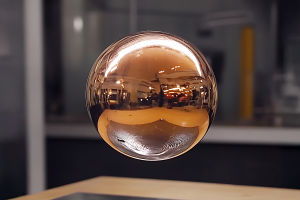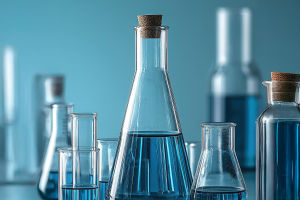Friends, picture a dimly lit RMIT University lab where streams of treated sewage flow through glass reactors. Instead of discarding this effluent, scientists tap its hidden metals to spark an electrochemical alchemy, splitting water molecules into pure hydrogen fuel and oxygen.
This breakthrough turns a perennial pollution headache into an abundant, zero‑carbon energy source, promising a radical shift in how cities tackle waste and power tomorrow’s world.
Catalyst Breakthrough
RMIT researchers, led by Associate Professor Nasir Mahmood, noticed tiny traces of platinum, chromium and nickel drifting in municipal wastewater. Rather than filter them out, the team engineered polymer electrodes coated with spongy carbon to capture these metals in situ. As sludge washes over the porous surface, metal ions latch onto the carbon scaffold, instantly transforming into powerful electrocatalysts for hydrogen production.
Electrode Design
The engineered electrodes feature a carbon-based mesh crafted from agricultural residues like rice husks. This black, sponge-like matrix boasts high surface area, drawing metal ions deep into its pores. Under an applied voltage, these adsorbed metals serve as catalytic hotspots, lowering the energy threshold for water‑splitting. Once stabilized, the electrode operates without external precious-metal loading, slashing material costs while maintaining robust performance.
Steps
Follow these five steps to convert wastewater into hydrogen fuel:
Step 1: Pre-treat sewage to remove solids and organic debris;
Step 2: Install carbon‑mesh electrodes that extract in‑stream metal ions;
Step 3: Connect to a renewable energy source and apply voltage;
Step 4: Collect hydrogen gas evolving at the cathode and oxygen at the anode;
Step 5: Redirect oxygen to treatment aeration for enhanced purification.
Lab Results
In continuous operation for 18 days, the system delivered steady hydrogen output with less than a 5 percent drop in efficiency. Bubbles of pure H₂ rose at a rate of 0.8 cubic meters per square meter of electrode daily—comparable to industrial green‑hydrogen benchmarks. Meanwhile, the oxygen byproduct enriched lab‑scale treatment vessels, speeding up organic breakdown by nearly 20 percent.
Eco Benefits
This dual-purpose technology tackles two challenges: reducing freshwater demand for electrolysis and minimizing wastewater pollution. By repurposing municipal effluent, cities conserve millions of liters of freshwater annually. Simultaneously, the process filters residual heavy metals, preventing their release into aquatic ecosystems. The net outcome is a dramatically cleaner water cycle coupled with emission‑free hydrogen fuel, advancing sustainable urban utility networks and closing the loop on waste and energy.
Water Treatment
The oxygen gas produced at the anode can be piped back into full-scale treatment plants, boosting aeration without extra energy inputs. Enhanced oxygenation accelerates bacterial digestion of organic pollutants, cutting treatment times and chemical usage. Facilities that trialled this approach saw a 15–30 percent reduction in biochemical oxygen demand, translating into smaller reactor footprints and lower operating costs.
Scaling Partners
RMIT’s team, backed by grants from the Australian Renewable Energy Agency, is now courting industry and government partners to pilot the technology at municipal scale. Collaborations with water utilities and electrolyser manufacturers are planned to design modular units that integrate seamlessly into existing plants. Regulatory approval pathways and funding models are under negotiation to accelerate deployment across capital cities.
Global Vision
This innovation holds promise for water‑scarce regions across Africa, the Middle East and arid zones worldwide. Coastal desalination brine, dairy effluent and textile wastewater may likewise feed the system, expanding its reach beyond sewage. In remote desert towns, solar farms can pair with onsite treatment reactors to deliver off‑grid hydrogen for cooking, transport and backup power, revolutionizing local energy independence.
Obstacles
Challenges remain: wastewater chemistry varies widely, while fouling by biofilms and grease can inhibit metal uptake over time. Ensuring long‑term membrane integrity and corrosion resistance under continuous operation demands rigorous field trials. Economically, upfront costs for retrofitting legacy treatment plants and producing electrodes at scale must drop via mass manufacturing and streamlined design.
Expert Endorsement
Published in ACS Electrochemistry after peer review, this research draws on expertise in electrochemistry, materials science and environmental engineering. Mahmood’s group collaborated with chemical engineers and water‑treatment specialists to validate performance under realistic conditions. Open data on electrode lifetimes, energy efficiency and water‑quality metrics underpin the project’s transparency, building trust among regulators and investors seeking verifiable decarbonization pathways.
Conclusion
Friends, sewage has long symbolized waste and pollution, but this green‑hydrogen breakthrough turns it into a cornerstone of zero‑carbon energy. By tapping hidden catalysts in our wastewater, cities can reduce fresh‑water use, lower emissions and enrich treatment processes. Could tomorrow’s sustainable neighborhoods run on the flush of a toilet? Share this story with your community and spark the conversation that fuels real‑world change.


